Episode 1: Etherbox
Etherbox is a constellation of collective tools and practices that developed in and around Constant5. Etherbox responds to practical issues when collaborating in physical spaces with digital tools. In parallel, it became a platform to reflect on network technologies, on how to document artistic processes and on processes of collaboration.
On a practical level, etherbox was a response to several frustrations: the fragility of online resources, the fact that the labour necessary to maintain resources online after a collective session was often overlooked or simply assumed to continue indefinitely, the limitations of Internet bandwidth when working with many people using etherpad-lite. The goal of the project was thus to present an infrastructure that is both visible and situated. Since it's early beginnings in 2013, many groups have enjoyed the pleasure of writing and documenting together, questioning infrastructure set-ups or simply sharing files effortlessly. Through these multiple experiences, Etherbox has grown up to facilitate discussions and collaborative practices independent from Constant collaborators. Now it is ready to transmutate into other networked imaginations.
As part of its programme, Constant regularly organises situations in which artists, activists, programmers, academics, designers and other researchers collaborate, exchange and reflect. Participants are invited to appropriate physical spaces for the time of the meeting: they share tables, couches, a library, the kitchen and its utensils, the basement or the closet. Etherbox extends this hospitality into digital space. It is the installation of a temporary local platform that foregrounds the sociality of DIWO6 infrastructures over the services of often commercially owned spaces in global networks.
While existing local network or server tools make users choose between local or global networking, people using Etherbox can still be connected to the internet. Sharing documents over Etherbox means that they don't travel via the far-away data-center servers of corporations, but remain in a network-setup that is visibly and physically accessible to everyone. Likewise the Terms of Service are negotiated locally, between people often in the same room. They become specific conditions for the use and potential afterlives of the collected material, rather than being thrown together by company lawyers on another continent.
This publication includes manuals for basic usage, a conversation that tries to locate this Etherbox release within interconnected histories, recipes distilled from diverse experiences and a generous collection of appendices. The publication temporarily wraps up the ever-evolving development of the toolset, so that it can be installed by any software-curious group that can get their hands on a Raspberry Pi and knows where to find an ethernet cable.
Inside the box
Download
The latest Etherbox image can be downloaded from:
http://networksofonesown.constantvzw.org/01/etherbox-latest.zip
Transfer the file onto an SD Card and run it on a Raspberry Pi (version 2 or 3).
On a Linux system you can use the following command to unzip and copy the data onto an SD card. NB: in this example, "/dev/sdc" is the SD card reader. This depends on your system and can be dangerous if you accidentally pick the wrong one. Use a program such as "Disks" (gnome), gparted, or the mount command to get information about what device name your SD card reader might be.
unzip -p etherbox-latest.zip| \
pv | \
sudo dd of=/dev/sdc bs=4MFor a multi-platform graphical tool to do this, you might try Etcher.io: https://etcher.io/
Unpacking the boxes
Etherbox is in fact an assemblage of several other existing "boxes", it is a collection of Free Software tools. Some (like Apache and make) have a long history and represent deeply embedded workflows. Others, like etherpad-lite, are relatively newer, with a history that can reflect complex inter-plays of commercial interests with Free Software projects. The current release of Etherbox consists of:
- Apache: The long existing free software webserver
- Etherpad-lite: A browser-based really realtime shared document editor
- Pandoc: Powerful mutli-format document convert used to convert and assemble markdown source into HTML output
- Imagemagick: The ever useful "swiss army knife" multi-format image converter
- Etherdump: A tool to publish etherpad pages to files.
In general, a design principle of the project is to use Free Software, protocols, and conventions as much as possible and avoid creating "smart" interfaces that obscure these pre-existing (historical) practices. The very longevity of systems such as Apache configuration files, or the operation of the shell, create a meeting ground for participants of varying degrees of familiarity with these particular ways of working.
make & makefiles
In addition to these core pieces of software, a "pipeline" workflow is employed by virtue of a "makefile". As opposed to a conventional CMS (Content-management system or server), Etherbox uses a Makefile to make the core decisions about how materials are handled legible. In fact the contents of the makefile is itself stored in an etherpad document, meaning that it can be read and modifed at will. Keep in mind that the format of a makefile is strict, so changes should be made carefully.
make7 is a popular Free Software tool that helps programmers compile their code into programs. In Free Software, heterogeneous beast that it is, there is typically no single way to make such a translation happen. And that’s a good thing. make has been described as an exectuable cookbook, where heterogeneous 'recipes' can be defined and executed. Makefiles capture the process and make it editable and malleable. Increasingly the tool is finding new uses in publishing workflows to compile prose text into electronic formats like epub and PDF. The etherbox uses a makefile workflow to compile etherpad content and convert into HTML output. make has no graphical interface and represents a distillation of practice that suggests future tools for creating flexible, editable workflows where tweaks and workarounds are the norm.
See the Makefile used for this publication in the Appendix.
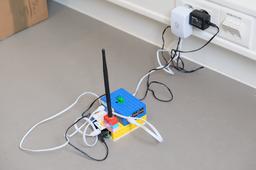
A conversation about releasing Etherbox
29 June 2018 @ etherbox.local and WTC25, Brussels
- MM = Michael Murtaugh
- AM = An Mertens
- FS = Femke Snelting
- RA = Roel Roscam Abbing
Why is it important to trace the history of "Etherbox"?
RA: The reason to document the history of etherbox, is because we are publishing an image right now that will expand beyond its original group of users in Brussels.
FS: It's a way to remember that Etherbox is an object that grew within a practice, that it is intimately linked to events, groups of people, concerns and practises. If we would not document its geneaology, the code or the object would eclipse other types of input. Organising situations chronologically on a timeline is only one way to remember those moments, but then how do those moments represent shared practices that do not develop always so linearly. If we say that practices are not bound to time and space, then how to document them in a respectful and generous way, not excluding anything or anyone that should be there, but also not pulling in everything? How to draw a line around a process to make it possible to think about Etherbox, while taking responsibility for that incision and its consequences. I think our struggle with how to write the pre-history of Etherbox is about that.
RA: There's a reason that it is Constant initiating this publication, and that it's the four of us sitting together now?
AM: For me it has to do with identity. We all have a name, now we are discussing a thing with a name, but this name relates to a collective practice. I feel that I am composed by anyone that I have met on my path. So, something like Etherbox is co-constructed by its meetings, experiences, peoples. It is a collective entity.
MM: Does it even make sense to trace back when the thing appeared? It is changing all the time, and there is an inherent fallacy in talking about a history of 'Etherbox' because it didn't exist in this same way most of the time. To me, the project works as a Trojan horse, in that it's a way to put a set of processes (working as a server administrator) in a specific situation.
So, when did Etherbox become "Etherbox"?
MM: I have no idea.
RA: I think it was at the Machine Research event, it was the first time I saw it appear as a LEGO-kit. But I would disagree with the "Trojan Horse" story... It did not bring the same practises as it promised to do. There was some play with the cgi-scripts, but it was different from the dynamic that we had in Relearn 2015... it became too much a service, how it functioned at the presentation at Transmediale is not how we would have used it.
FS: So naming it was marking the end of Etherbox functioning as a Trojan Horse?
RA: The Trojan Horse contradicts the view that "If we package it well enough, then we can bring it anywhere".
MM: That is interesting to hear about Machine Research, because for me that was kind of high point in terms of the potential of what a shared writing space could mean; like I thought it was great that you and others wrote CGI scripts that then PHD students presenting their research could access and use to experiment with on their writing.
AM: For me it started when Michael announced "here is the Etherbox" when he gave me the set-up to take to Madrid for the Objects in Common worksession. I thought: oh he gave it a name.
MM: I think someone started to call it like that, as a joke, and I started using it.
FS: It is maybe also connected to the general idea of continuous collaboration that we experimented with through Etherpad: making collective graphviz-on-etherpad, ethertoff8, annotated pdfs, collaborative notetaking, producing the Conversations book9 on pads and eventually html2print10. So for me it was obvious to name Etherbox after the 'ether' from Etherpad. Etherbox tied into the thinking at OSP11 around fluid collaboration. In traditional design workflows there is the "declutch" or "baking" moment, when the design process becomes separated from the production -- and Etherbox is an important element in an ecosystem where you try to avoid that separation.
What practices does "Etherbox" generate or connect to?
RA: Maybe we have two strands: collaborative writing and networking experiments.
FS: Yes, I think it explains our different and crossed histories with Etherbox.
AM: I would say publishing should be included here, as another strand.
MM: There is an early Etherbox version (in fact at the same time as Machine Research) that we (together with Aymeric Mansoux) used when the Experimental publishing programme was starting. We brought it to the Zine camp, where participants could connect to write a collective zine. Here we repeated the shared Questionnaire format12 from Relearn 2015.
FS: The experiments with Christoph Haag are connected for me, even if they were not necessarily done through the box.
MM: We worked on that at Promiscious Pipelines ... working with etherpad and Christoph's way of working with BASH scripts and Latex workflows with an etherpad, that impressed me as well.
AM: For me it connects to Jonctions/Verbindingen 14 when we decided to do intensive collaborative notetaking as the official way to document the days and invited OSP and Ethertoff to turn the notes into a publication13.
FS: Of course, that event was all about Feminist Servers, and Boxes!
MM: ... and their problematics.
RA: That event was really formative for me to understand how networking could be experimental in different ways.
What initiatives or events are missing from the timeline?
FS: I was wondering about including the Libre Graphics Research Unit14. There was no box, Michael was not there, we did not really formulate the need for something like Etherbox but a lot of the ideas we practise right now seem to have gestated there. Maybe the closest was the Piksels and Lines Orchestra15 that emerged in Bergen. People started sonifying the processes running on their laptops -- it somehow triggered the idea that there's a flow between collaborating, note taking, history writing, design and production.
MM: An important moment was a class co-taught with Aymeric Mansoux, called Sandbox Culture1617, that was based on Aymeric's (then forthcoming) PHD18. We had found the example of the Community Memory19 project really inspirational, to talk about problematics of people being put more and more into a sandbox, closed systems that prevent you from having access to the admin.
AM: That is a difficult question. I have wondered for a long time about collaborative writing : what is an authentic form of collaborative writing where there is no classical hierarchy, and which leads to an interesting result. I remember testing a lot of recipes, using etherpad to try to construct a story, and witnessing people holding back, taking authorship in a collective text, resisting the idea of a collective; others fearing to be "aggressive" by correcting other peoples notes, or "taking up too much space". It is interesting to see this has changed.
FS: I think, somehow, this means Algolit20 is also part of the story?
AM: Yes ... and no ... now it gets too complicated!
AM: And there is also the Piratebox21 and the Librarybox22 that should be in the timeline.
FS: But these are part of a larger context, right? I mean they were around and we looked at them, but these were not necessarily projects we were connected to or collaborated with? Although, maybe through the Free Software code that we might have worked from ... would that count as a collaboration?
RA: Yes, I think Piratebox should be mentioned but maybe should not go into that timeline ... I am not sure ...
Is Etherbox like a Piratebox?
RA: Did anyone ever use the Piratebox?
AM: We used one at Public domain day in the Royal Library in 2013. It connected somehow with the idea of deaddrops, and sharing files.
MM: In my experience, Pirateboxes tend to remain a proof of concept, they are often not so practical, but it is useful to give people an idea of what a local network could mean. But it often lacks the discussion of a surrounding community and the "dead drop" idea potentially repeats the same problematics of an "anonymous" 24/7 Internet.
RA: So maybe this is how we can distinguish between what we consider part of Etherbox pre-history, or not: that we actively used it and maybe developed it.
FS: So at some point we do need to answer the question: 'who are we'!
RA: And what about OpenWRT23?
MM: The Piratebox was my first experience with OpenWRT. Finding this community of work was an eye-opener for me.
FS: Oh! I remember the wonderful Unitary Network workshop24 by Martino, Roel and Dennis ... And of course we should mention homebrewserver.club25; this work has been intersecting with many events and brainstorms.
MM: There was also a moment during the Digital Publishing Toolkit26 project that was quite telling. I had been tasked with thinking about which tools to use and had decided to suggest using standard developer tools like make rather than "yet another" web 2.0 platform. On the train ride from Brussels to Rotterdam the morning of a group meeting, I registered on a service called "Editorially" to make screenshots of it as an example of the kind of slick integrated tool that, though appealing, was dangerous to rely on. Literally on the train ride back to Brussels, I received an automated message saying that I had so many days to migrate my content offline as the service was closing down due to the unsustainable work for the small team of developers to maintain the platform online.
What about Raspberry Pi?
FS: Pierre Huyghebaert from OSP just suggested that we included the history of Raspberry Pi27 into this release ...
MM: I remember having a sort of "aha" moment with first using a Raspberry Pi, the idea that a snapshot of an entire system gets dumped to an image, it makes suddenly everything software. And that using dd28 was like dubbing cassette tapes, just push play on one side and record on the other.
RA: I have the opposite feeling: for me it was a key realisation that it doesn't matter what the hardware is, ... being able to do experimental network setups on normal laptops for example.
MM: But, from a practical maintenance point of view, it's very appealing that you can archive the whole system, including the computer hardware. That it becomes something you can put in a literal archive box.
Who created Etherbox?
MM: Well, in a way the question is: who are we to release it ...! In fact it comes from many sources.
FS: Yes, I think that is exactly the point. This release is done to make Etherbox easier to appropriate by more people and collectives. On the one hand that means 'owning' up about the care, attention, time, effort and imagination that went into it. At the same time it is a way to let it go.
MM: For me, I've had the opportuntiy to develop the system as part of my role with Constant caring for the infrastructure used during the worksessions Constant hosts twice a year. For me it's ideal, because it gives a situation where I can observe how the system is used, and many of the participants of such sessions are often also involved in similar projects, so there's a lot of exchange of ideas.
FS: For Constant, it has been super important to develop this infrastructure in dialogue with you Michael, because you have been and are very much involved in the practises and the content of what is happening at Constant; it could not have been done by anyone else.
MM: Being in such a "dual-role" is stressful too, and with time I've focused more on the infrastructure and become less of a participant.
FS: Yes, I understand. I think you being less involved in the content of the events somehow shows that it is a good moment to release. It is time!
RA: I would not call myself a co-creator of Etherbox. I was more working on connecting it to the larger questions related to Networks of ones own through the homebrewserver.club.
AM: I think I could have been replaced by anyone else that has used it.
FS + MM : That is not true!
MM: An: you have been carrying the box, often taking it to other places, demanding explicit questions to it that have shaped the way it is now and that is interesting.
FS: I agree. You have been insisting on it being used in different contexts, but also have had many more intense experiences with it. My first moment alone with Etherbox was only last week!
RA: For this release, you kept insisting on different ways of using it, of people wanting to work with it as a writing interface or as an alternative to Dropbox, while others are being interested to host or make it themselves.
MM: I can remember thinking during Uncreative Writing (where many participants were not interested in questions of infrastructure) that part of the appeal of etherpad + the local network was that it really did work faster and better than using, say, Facebook or other online platforms. It also didn't hurt that the internet access was through a 4G modem that after 1GB of use was severely limited in speed.
Etherbox experiences
Here are a few ways we have used Etherbox so far. We have specifically selected these anecdotes and workflows because you can use them as recipes for introducing Etherbox (and Etherpad) to people who have never used it before.
Generate a pdf with the collective notes and pictures
Apart of the convenience of generating a static HTML dump of notes produced in an event, it is also very pleasant to collect them in a pdf that can be printed or shared online. Some of the first editions were handmade, by copying and pasting the content in a Libre Office document.
- A nice example is the collective commented critical reading of Kenneth Goldsmith's Uncreative Writing, a small residency that took place in Brussels in June 2015: Logbook The pictures were added using a script. Further automating the process is definitely an option.
- Relearn 2013 and Relearn 2015 were interesting contexts for experimenting with the generation of publications. For Relearn 2013 a team spent time afterwards to edit and design the notes into Publication Relearn 2013, while the publication of Relearn 2015 was generated live on the last day of the event: Publication Relearn 2015.
The Questionnaire
During Relearn 2015 in the offices of Zinneke in Brussels in August 2015, we broke the ice of collective writing on a pad by setting up a questionnaire. In this case, we asked everyone how they were using Linux. People in the room were simply asked to write their answers below each question. You can see the colourful result here. The Questionnaire technique was also used for the Interview with Etherbox and a Conversation about releasing Etherbox.
Backroom communication
The most extreme example of backroom communication through Etherbox took place in a situation where we were requested beforehand not to make any recordings nor take pictures during a 'confidential' presentation. We had no access to the internet in the room, but once we plugged in Etherbox we had an instantaneous local network to take collective notes. The experience is related to making Iterative Transcriptions, where etherpad starts to function as a non-linear chatroom for a group of people to quietly comment, joke, exchange references and collectively process what is said in front of them. When you plug Etherbox into a USB-powerbank, you could bring your local network to a train, a park or a club as well.
Iterative Transcription
An etherpad can be a really useful tool for creating dynamic transcriptions of a live (or pre-recorded) presentation. Part of the appeal of the software is that different participants can participate at different speeds and contribute with different kinds of knowledge. For instance, native speakers of a language which strong typing skills are useful for quickly typing bursts of transcription. The real-time nature of etherpad makes it possible for small teams of 2--3 transcribers to overlap / interlace their work so that a transcriber can spend time finishing a particular phrase while perhaps a following phrase is handled by another. Other participants with specialized knowledge can they play the slower paced role of say correcting proper names or adding links to cited projects that may not be clear.
2-pass Collaborative editing
One workflow is to use a pad to collectively take notes while individuals or small groups present one-by-one. Notes can be taken by a rolling set of different listening participants. Once this "inventory" is made, the pad can be used collectively to review / reorder the elements, merging repeting themes into single strands, clustering shared interests and potentially forming new groups.
The Legible system
The Apache server can be modified to serve starting from the root of the file system (in other words to server all possible files). This configuration, which would make any server administrator cry out in fear (it exposes the contents of every file to the network), is in fact highly educational as it takes the UNIX philosophy of everything is a file and combines it with a means of then annotating (through links and the use of the etherpad) those aspects of a system that normally remain hidden. The situatedness of a local network, itself not reachable from outside the local network, means that access is limited to just those locally present. This configuration can be a useful way to explore / deconstruct what a server is in a group with little or no prior technical knowledge.
DocumentRoot /
<Directory />
Options Indexes FollowSymLinks
AllowOverride none
Require all granted
</Directory>Guide to using your Etherbox
Make sure you are connected to the network of the Etherbox
Look at the wireless networks listing, and select etherbox.
Surf to etherbox.local
You should see this interface: 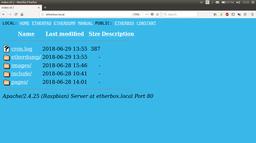
You find 4 folders:
- etherdump: a raw listing of all the pads you made
- images: a drag & drop folder to share images
- include: content related to the graphical design of your etherbox
- pages: this folder can have any name, books/videos/sound; you can delete and add as many folders via ftp (see below)
Some browsers don't like to connect via the local address etherbox.local or etherbox.lan. A solution is to connect to the box typing its IP-address in a browser.
Find out the IP address of the box
Open a terminal
ping etherbox.localNote that the ".local" domain works using a protocol called zero-configuration networking (aka Rendez-vous). On a Linux system you can install a package called avahi if it isn't installed already. On a Mac, this should already be installed. On Windows, installing software such as CyberDuck includes a separate installed for zero-configuration networking / Rendezvous which you can install.
Create a writing pad and start working!
In the tabs upper left of the interface, you click on 'Etherpad'. This brings you to the following page: 
Type a name for your new pad, please don't use spaces or strange characters. Those might complicate the backup and compression of your pages: 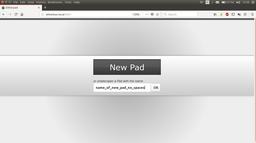
Access to existing pads
In the tabs upper left of the interface, you click on 'Etherdump'. This brings you to the index of all the pads: 
You have different formats you can use:
- pad: the actual pad, to continue editing
- text: a plain text file generated from your pad
- diffhtml: html-page generated from your pad, showing all the different changes
Once your Etherbox is set up in a place for collective work and exchanges, there are a few practical issues that you will have to deal with as a host. This is a non-exhaustive list, written in a somehow chronogical order.
You need the IP-address to ssh into the box (see above).
ssh to the box
Many of the operations described here require that you use the ssh program to gain access to the server via what is called the shell (ssh stands for secure shell). You do this by using a Terminal software. Most Linux users will be familiar with the Terminal. Mac users can find a Terminal in the "Utilities" folder of their applications. On Windows, you can use a dedicated ssh program such as PuTTY.
ssh pi@ip-address-of-the-box
login: pi
pass: raspberryYou need to ssh in the Etherbox in order to shutdown or reboot it, or reboot parts of the software installed. These are the default login/pass of any Raspberry. You can of course change that, but the idea has been to create a low-threshold to participation, following as many "defaults" as possible, as the Etherbox has typically been used with a group of people physically together with respect for each other and the infrastructure they share, and not made available publically.
Make it easier to login, with an ssh key
Starting from your laptop (open a new Terminal session if you are connected to the pi):
ssh-keygenChoose the defaults. This generates an "ssh key" pair.
Use the ssh-copy-id utility to send it to the pi.
ssh-copy-id pi@etherbox.localShutdown the Etherbox
It is recommended to shutdown the etherbox rather than just unplugging it. There is a (small) chance that the filesystem could get messed up if you don't.
sudo shutdown -h nowWait a few moments still for the system to come to a halt before unplugging. You should see some blinking lights near the power connection of the pi finally stop changing.
Reboot the Etherbox
sudo rebootRestart Etherpad (this can help when people start having connection problems to the pads)
sudo service etherpad restartMove to the home folder
All of these commands have the same effect, that the "current working folder" gets set to the pi user's home.
cd
cd ~
cd /home/piMake dump (make static copies of the contents of the etherpads)
From the folder ~/www/etherpad you can use the make command to do many useful things. First you need to get to the right place:
cd
cd www/etherpador
cd ~/www/etherpadAnd then:
make dumpFor more recipes, have a look at the makefile
Compile the contents of several pads with an .index pad
The default makefile has rules to create a single publication from any pad whose name ends ".index". This pad may then contain special "include" lines that cause the contents of other pads to be copy/pasted into the master document at that point. In this way many pads can be compiled into a single publication. Each pad should use markdown encoding. For example, an excerpt of the .index pad used to create this publication:
<!-- ## Introduction to series ('why networks of ones own'). What could be following threads/releases. -->
#include http://etherbox.local:9001/p/seriesintroduction
<!-- ## Introduction to first issue ('why etherbox'). FS -->
#include http://etherbox.local:9001/p/issueintroduction
## Makefile
```makefile
#include http://etherbox.local:9001/p/Makefile
```Note that HTML comments are used ( <!-- --> ) to include reminders that are not processed / visible in the output. Note how markdown "code fencing" is used around the makefile to add syntax coloring to the contents of this pad.
If the pad is named HELLO.index, then (following the rules of the default Makefile), after each dump, the system will attempt to make HELLO.html using the pandoc software.
In addition, it is possible to create a PDF output by typing either:
make HELLO.pdf
make HELLO.booklet.pdfYou can also manually trigger a rebuild of the HTML with: make HELLO.html
Note that "HELLO" could be any name you choose. It's possible to make multiple publications on a single etherbox.
sftp to the box
host: etherbox.local or ip-address-of-the-box
user: pi
password: raspberry
protocol: sftpsftp is handy when people want to customize the index of the Etherbox on the fly. They will be able to create/delete folders, upload/delete large files etc.
Various sftp clients are available FileZilla for GNU/Linux or Cyberduck for MacOS
Delete a pad
Add the tag __NO@PUBLISH__ (without @) on top of the pad. This causes the dumps to get deleted -- and in any case will remove the page from the index.
Archive the pads
Connect via SSH, and run script:
eb_backup.shThis will create two files in /home/pi/www/backups. One for the etherpad history (an sql dump) and the other a gzipped snapshot of the "etherdump" folder including any HTML/PDF outputs. This script can also be triggered via the makefile by typing:
make backupChanging the frequency of the cron
By default, pads are dumped every 30 minutes. You can change the frequency that the pads get dumped, and output documents are made. You do this by editing the "crontab":
crontab -eWhen you type this command, it opens up a text file with mostly comments that explain cron. At the bottom of the file is a special line that lists a script to run with numbers that indicate how frequently.
# ┌───────────── minute (0 - 59)
# │ ┌───────────── hour (0 - 23)
# │ │ ┌───────────── day of month (1 - 31)
# │ │ │ ┌───────────── month (1 - 12)
# │ │ │ │ ┌───────────── day of week (0 - 6) (Sunday to Saturday;
# │ │ │ │ │ 7 is also Sunday on some systems)
# │ │ │ │ │
# │ │ │ │ │
# * * * * * command to execute
# For example, you can run a backup of all your user accounts
# at 5 a.m every week with:
# 0 5 * * 1 tar -zcf /var/backups/home.tgz /home/
#
PATH=/usr/local/sbin:/usr/local/bin:/usr/sbin:/usr/bin:/sbin:/bin:/home/pi/bin
# m h dom mon dow command
*/30 * * * * /home/pi/cron.sh 2> /home/pi/www/cron.log.txtThe key part is the last line. The /30 means that the script happens every 30 minutes. You could use /5 to update the outputs every 5 minutes for instance. The downside is that this might make the pads slower when the outputs are being generated. (Note also the added PATH variable so that the scripts run with the same $PATH as the pi user.)
The software utility cron is a time-based job scheduler in Unix-like computer operating systems. https://en.wikipedia.org/wiki/Cron
Resetting a box for future use (delete all pads, etc)
Connect via SSH, and run script:
eb_reset.shPlacing Etherbox in your network
By default, the Etherbox includes software to create it's own hotspot named "etherbox". For work sessions with more than 20 people, we typically use the Raspberry Pi in conjunction with a small OpenWRT router to provide a more robust hotspot. The following diagrams show different network configurations used over the last years.

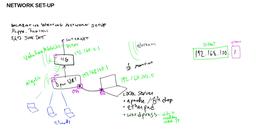
Booklet printing with a makefile
The booklet printing rule defined in the default Makefile is based on the class OSP blog post How to Print A Booklet in 19 Easy steps http://blog.osp.kitchen/live/how-to-print-a-booklet-in-16-steps.html
A straightforward rendering of these steps in single monolithic make rule could look like this:
%.booklet.pdf: %.pdf
pdftk_utils.py $< pad --multiple 4 --output $*.01.pdf
pdftops -paper match $*.01.pdf $*.01.ps
psbook -s`pdftk_utils.py $*.01.pdf count` $*.01.ps $*.02.ps
psnup -2 -PA4 $*.02.ps $*.03.ps
ps2pdf $*.03.ps $@
rm $*.01.pdf $*.01.ps $*.02.ps $*.03.psHowever, the fun of a makefile is the abilty to define incremental transformations, and let make put the sequence of steps together itself! Here are the final set of rules used in the default Makefile:
%.pdf: %.html
weasyprint $< $@
# PDF to Postscript
%.m4.ps: %.m4.pdf
pdftops -paper match $< $@
# Postscript to PDF
%.pdf: %.ps
ps2pdf $< $@
# Ensure a PDF has a multiple of 4 pages
%.m4.pdf: %.pdf
pdftk_utils.py $< pad --multiple 4 --output $@
%.book.ps: %.m4.ps %.m4.pdf
psbook -s`pdftk_utils.py $*.m4.pdf count` $< $@
%.booklet.ps: %.book.ps
psnup -2 -PA4 $< $@


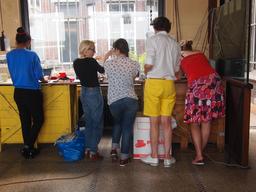
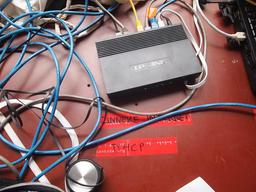
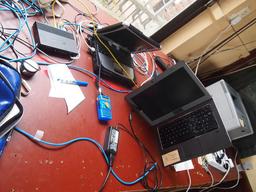
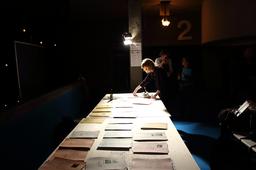
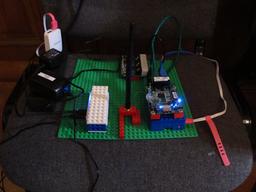
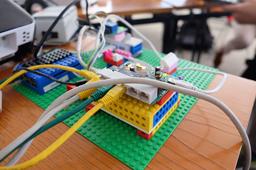
Social Shells & Mesh Cookbooks
This text exerpts a proposal prepared by Michael Murtaugh & Anne Laforet called Social Shell & Mesh Cookbooks made in preparation to Relearn 2014.
The introduction of the web radically popularized and changed the use of networked computers. The use of URLs to bridge protocols, host names, and file paths, and a simple public domain standard for hypertext created a social space of documents by virtue of the link (and associated practices like the webring).
In situating a social shell & mesh cookbooks in the browser we do not envision transposing established concepts the "social web" (aka Web 2.0). A core motivation in this project is a critical and often resistive response to contemporary online social media as many of the central mechanisms (think frictionless sharing, algorithmic "karma" scores, free software sandboxed in proprietary platforms, network infrastructure, and hardware) are highly problematic. In terms of network infrastructure, a social shell is closer to a 1960s multi-user UNIX system than to the "cloud" infrastructure behind today's popular social platforms. This project hopes to explore alternatives to centralization and global-scale as the only means of creating functional networked communities.
Web 2.0
Social Shell & Mesh Cookbooks
Source: http://activearchives.org/wiki/A_Social_Shell_%26_Mesh_Cookbooks